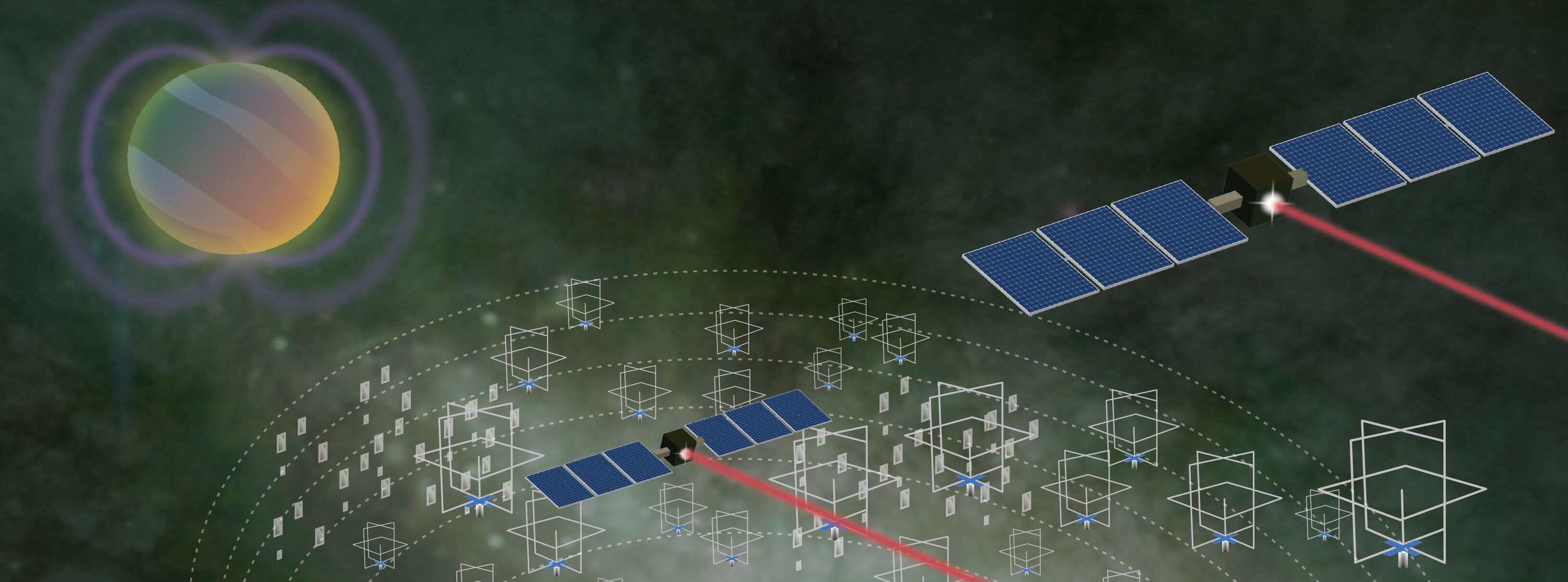
The Great Observatory for Long Wavelengths (GO-LoW)
The Great Observatory for Long Wavelengths (GO-LoW) is a new, visionary Haystack proposal funded by the NASA Innovative Advanced Concepts (NIAC) program. Led by Mary Knapp of MIT Haystack Observatory, the GO-LoW team of scientists and engineers includes Lenny Paritsky (Haystack); Melodie Kao (Lowell Observatory); Kat Kononov, Arthur Lue, and Jade Wang (MIT Lincoln Laboratory); and Jake Turner (Cornell University). “What excites me most about this project is the opportunity to see the universe in a way that no one ever has before—literally making a brand-new map of the sky,” said Knapp. For more on the first phase of GO-LoW research, see the NIAC Phase I study from February 2024.
In May 2024, the team was selected to continue their work via a NIAC Phase II award. This two-year award will allow the team to delve deeper into technological and scientific challenges for GO-LoW; in particular, the team will focus on modeling the many autonomous and semi-autonomous functions of the individual spacecraft and the constellation as a whole.
GO-LoW aims to reveal the as-of-yet unseen low-frequency radio sky. Scientists have not yet been able to view the universe at these frequencies, as the sky is hidden from ground-based telescopes by the Earth’s ionosphere. Radio signals bounce off the ionosphere, a layer of the atmosphere that contains charged particles, blocking out the low-frequency radio waves from space. Long-wavelength observations require correspondingly large telescopes to see clearly, so traditional dish antenna designs are infeasible in space.
Enter GO-LoW: an array of thousands of tiny, identical satellites—each smaller than a shoebox—working in close coordination together as a group. This observatory will measure low-frequency electromagnetic radiation, which carries crucial information about exoplanetary and stellar magnetic fields (a key missing ingredient for habitability studies) and other astronomical data of high interest.
Current space telescopes, such as the James Webb Space Telescope, consist of a single large, expensive spacecraft and are focused on high- and mid-frequency wavelength observations; the GO-LoW project has proposed an observatory composed of thousands of simple, small, and relatively cheap satellites. The array will use interferometry—a technique that combines radio signals from many smaller units into a large virtual telescope—to obtain highly detailed data from exoplanets and other sources in space.
Team Members
- Mary Knapp (Fellow/Principal Investigator); will oversee the study as a whole, define requirements for autonomous operations, create an architecture for the situation, determine modes requiring human input, design technology demonstration mission, and define top-level requirements for a technical demonstration mission
- Lenny Paritsky (Co-investigator); will develop preliminary multi-agent model, simulate small-scale operations, scale multi-agent model and interferometric model to full constellation size, evaluate the autonomous framework’s capability to handle failure scenaroios, and develop technology roadmap
- Melodie Kao (Co-investigator); will lead science roadmap development
- Kat Kononov (Co-investigator); will assess instrumental effects on science products, use input from multi-agent model to simulate science observations, assess data quality and key contributors to noise and other error sources
- Arthur Lue (Collaborator); will lead development of orbital model of constellation dynamics
- Jade Wang (Collaborator)
- Jake Turner (Collaborator)